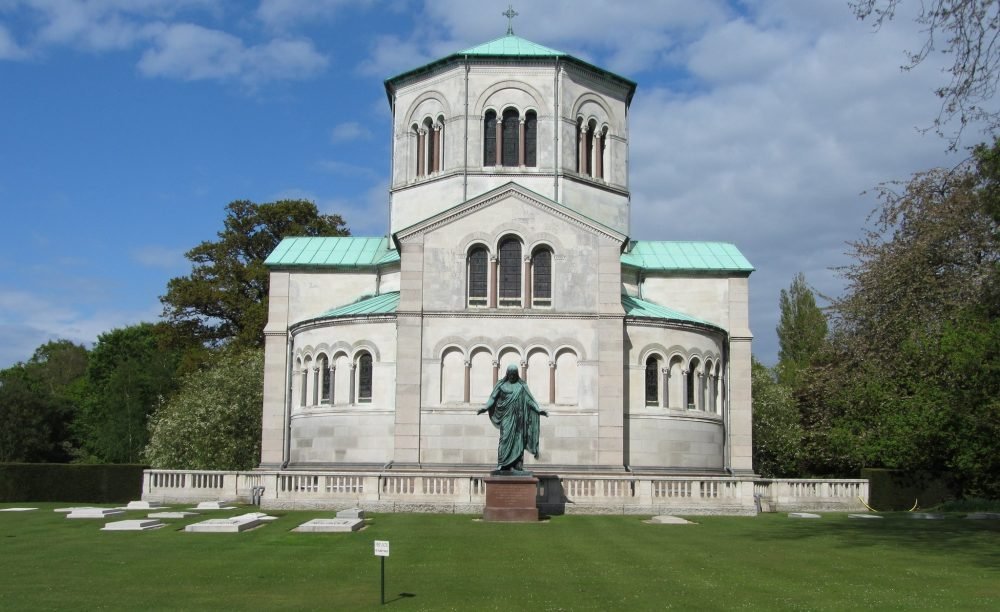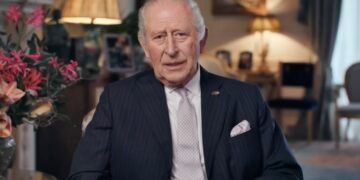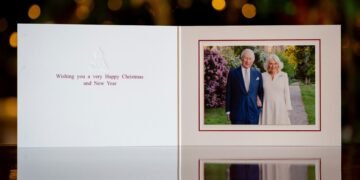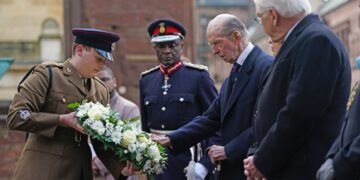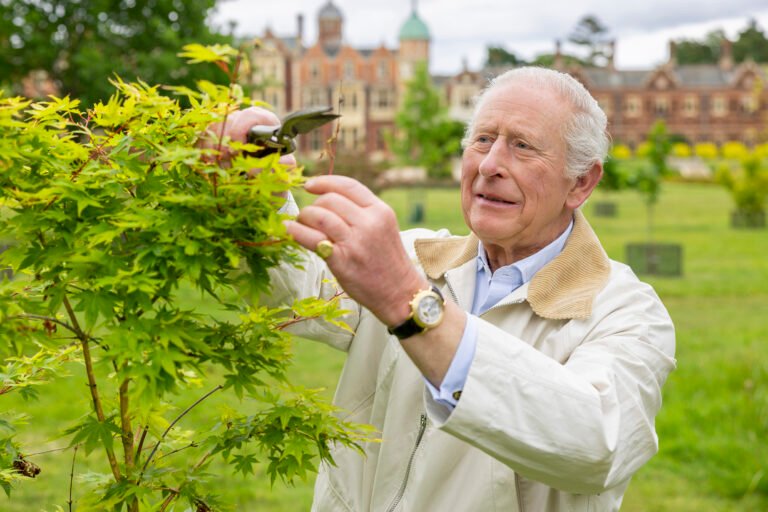Tucked away in Home Park, close to Frogmore House, Frogmore Burial Ground is one of the most private royal sites at Windsor.
This quiet cemetery has been chosen as the final resting place of Royals – and sometimes non-Royals – since the 1920s, and is situated next to the grand Royal Mausoleum that holds the remains of Queen Victoria and Prince Albert.
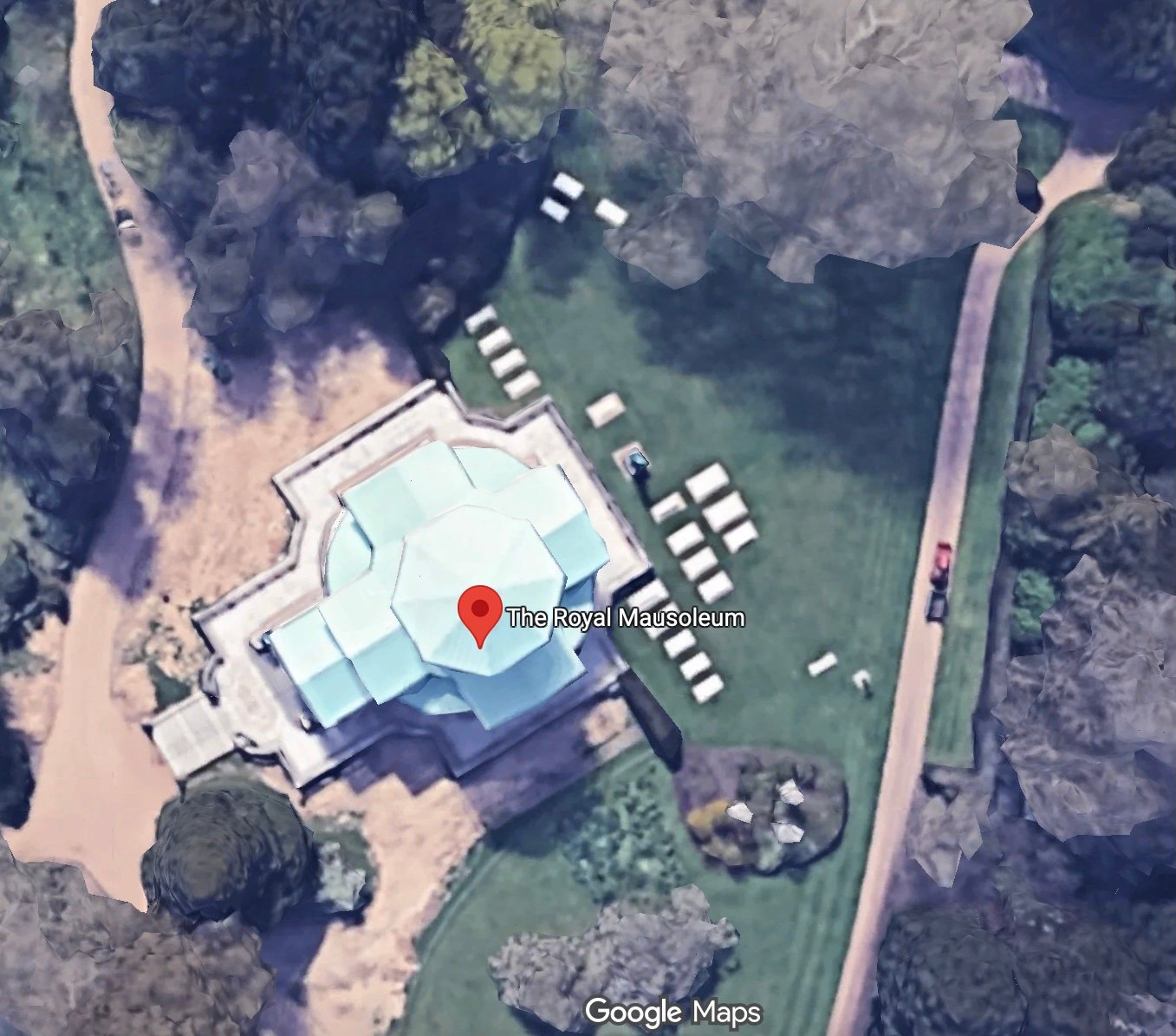
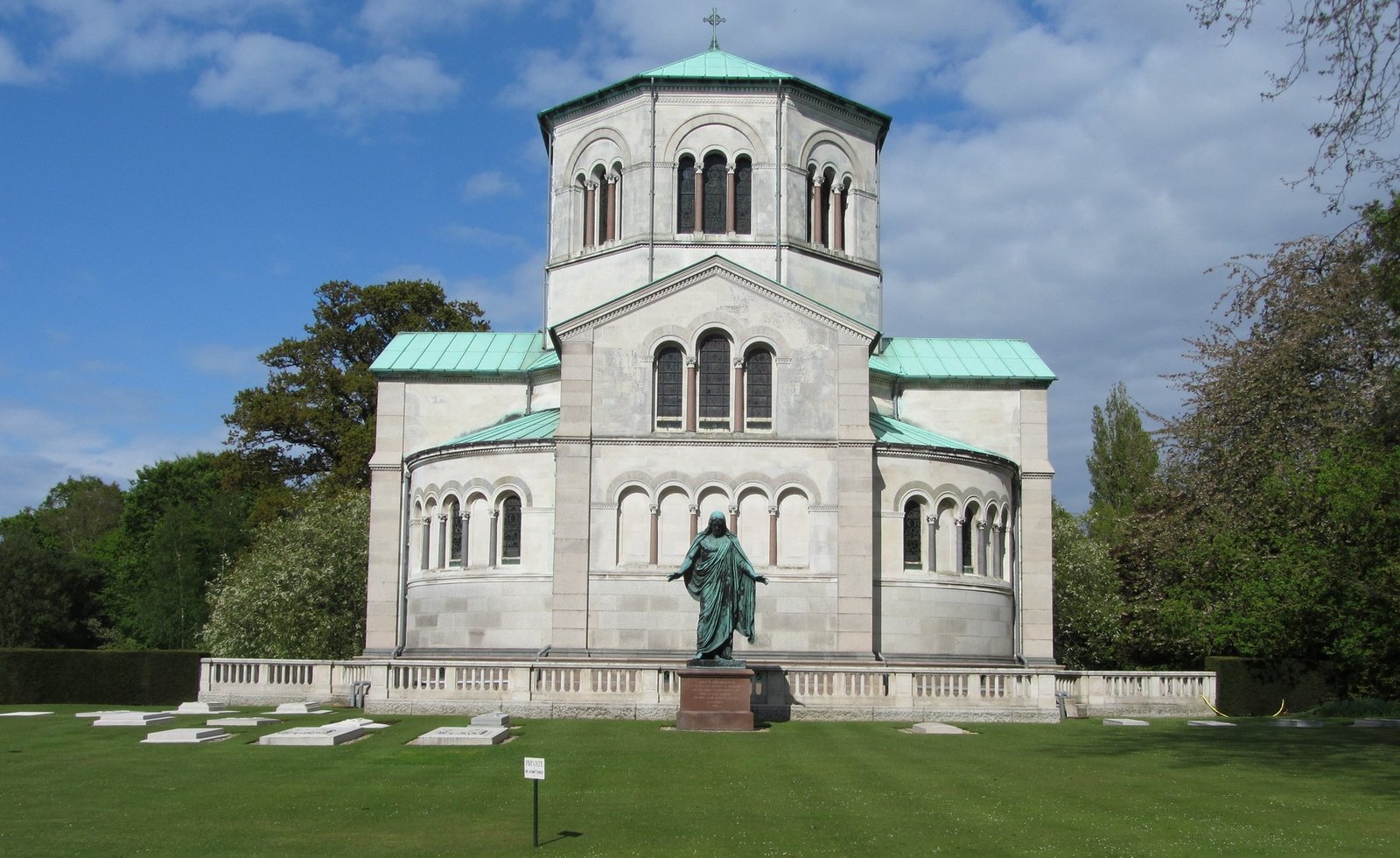
For some, the peaceful location is recognition of their life dedicated to service. For others, it is a place away from the glare of public eyes.
Take a look at the history of the site and learn about those who have been interred there.
The origins of Frogmore Burial Ground
Frogmore forms part of Home Park at Windsor, with the area taking its name from the marshy land once frequented by frogs…!
It forms part of the 31 hectare Home Park, part of the larger 5000 acre Great Park of the Windsor estate.
Centuries of burials in the vaults of St George’s Chapel meant there was a need for additional burial space, especially for more junior Royals and relatives more distant from the throne. This led to the creation of the Royal Burial Ground in 1928, when eight Royals were reinterred here:
- Prince Harald of Schleswig-Holstein (1876–1876), son of Princess Helena of the United Kingdom.
- Prince Francis of Teck (1870–1910), brother of Queen Mary.
- Princess Louise Margaret, Duchess of Connaught and Strathearn (1860–1917), wife of Prince Arthur, Duke of Connaught and Strathearn and viceregal consort of Canada.
- Prince Christian of Schleswig-Holstein (1831–1917), husband of Princess Helena of the United Kingdom.
- Lord Leopold Mountbatten (1889–1922), grandson of Queen Victoria through his mother Princess Henry of Battenberg.
- Princess Helena of the United Kingdom (1846–1923), daughter of Queen Victoria, wife of Prince Christian of Schleswig-Holstein.
- Adolphus Cambridge, 1st Marquess of Cambridge (1868–1927), former Prince of Teck and brother of Queen Mary, husband of Margaret Cambridge, Marchioness of Cambridge.
- Rupert Cambridge, Viscount Trematon (1907–1928), son of Alexander Cambridge, 1st Earl of Athlone.
Since then, it has become the final resting place of Princes, Princesses, Dukes and Duchesses – and even non-Royals.
Who is buried at Frogmore Burial Ground?
The Duke and Duchess of Windsor
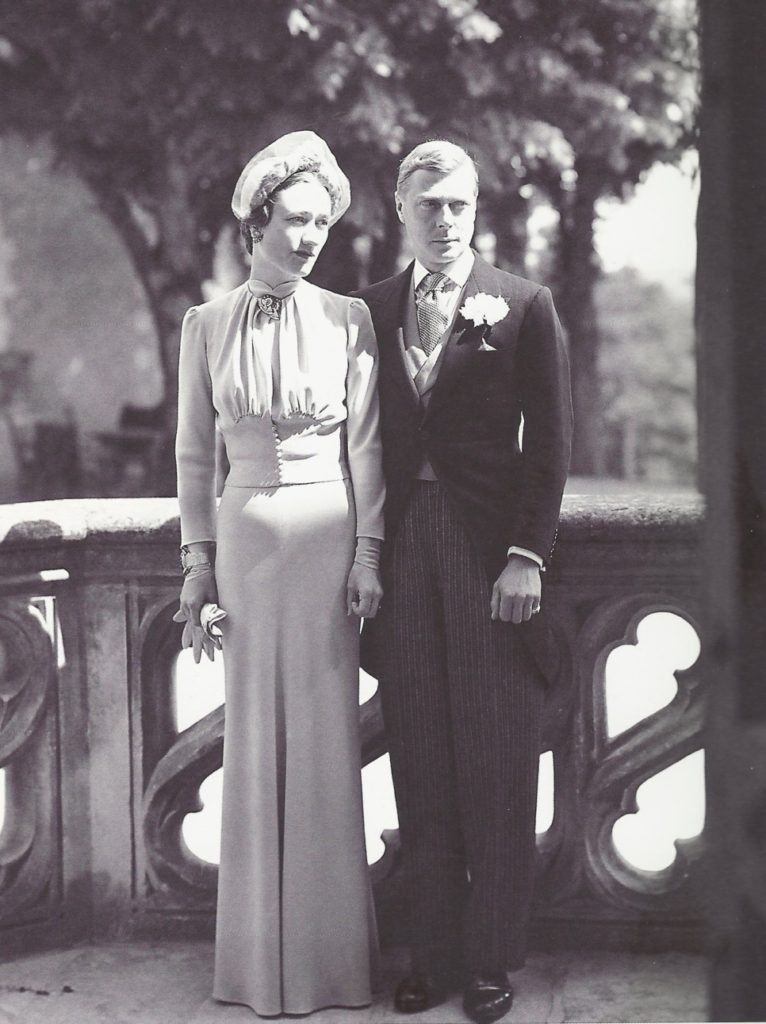
Perhaps the most famous names of those at rest in Frogmore are the Duke and Duchess of Windsor.
Edward VIII abdicated in 1936, giving up the throne for his love, Wallis Simpson – making them two of the most vilified people in British royal history.
He became Duke of Windsor after this and spent most of his life abroad, with a stint as Governor of Jamaica during the Second World War, effectively in exile.
David (as he was known to the family) died in Paris on 28 May 1972, aged 77, from throat cancer.
The Queen, Prince Philip and Prince Charles had visited the Duke during his illness just 11 days before, during a visit to France.
His body was returned to the UK for a funeral at St George’s Chapel, Windsor, before his burial at Frogmore, with the Queen allowing Wallis to stay at Buckingham Palace for the occasion – representing some rapprochement decades after the scandal that rocked the monarchy.
Wallis, Duchess of Windsor, survived her husband by 14 years, living her widowhood reclusively in France. The Duchess died in April 1986, aged 89.
Like her husband, she had a funeral at St George’s and was buried beside her husband.
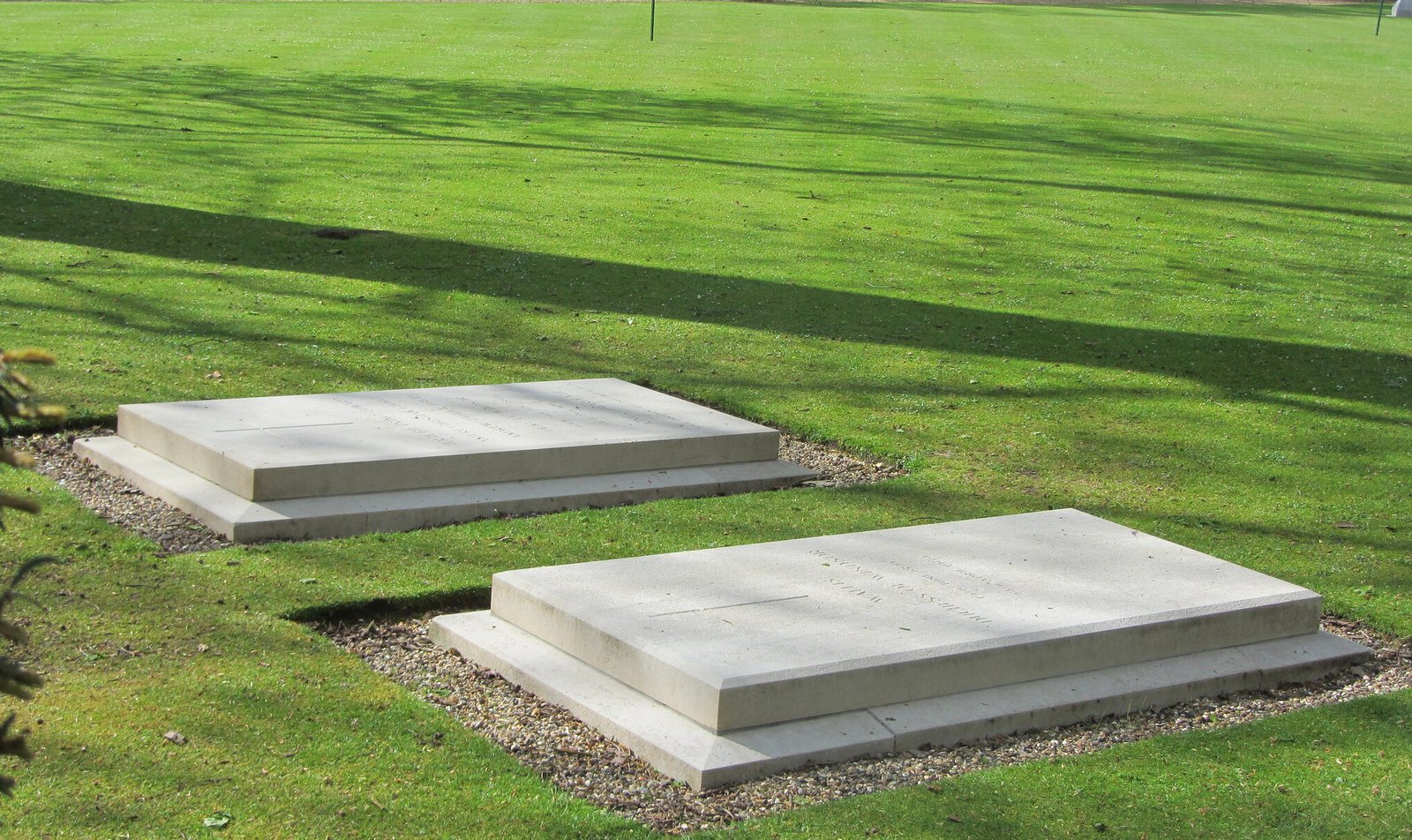
Prince George, Duke of Kent
The younger brother of George VI, Prince George is most known for his tragic death in 1942, during a non-operational flight (ie not part of a military mission). The plane crashed in Scotland, on its way to Iceland, but this made him the first Royal to die on active service in centuries.
George lived something of a glamorous life, making headlines for his friendships with society figures. He settled down and married Princess Marina of Greece and Denmark in 1934, and the couple had three children: Edward, Alexandra and Michael.
Their wedding at Westminster Abbey was followed by a Greek ceremony in the private chapel at Buckingham Palace (later destroyed in the Blitz), which was converted into an Orthodox chapel.
The Prince had trained at Dartmouth and served in the Royal Navy until 1929, having spent time stationed in Bermuda. He also held posts at the Foreign Office and later the Home Office, effectively becoming the first royal civil servant!
His royal duties included an extensive tour of South America with his brother, Edward, then Prince of Wales between January and April 1931. They totalled over 18,000 miles.
During the reign of George VI, the Duke was appointed a personal naval aide-de-camp, and Governor-General of Australia in 1939, but the outbreak of war meant he didn’t take up the post.
His eldest son, Edward, succeeded the Dukedom at six years old, while their youngest son, Michael was only seven weeks old.
As with the other burials, a service was held within St George’s Chapel. The Duke of Kent’s body was initially placed in the vaults of St George’s Chapel, before being transferred to Frogmore after the Duchess’ death some 26 years later.
Princess Alice, Countess of Athlone
Princess Alice was Queen Victoria’s last surviving grandchild, through Prince Leopold, Duke of Albany and his wife Princess Helen of Waldeck and Pyrmont.
Marrying the younger brother of the future Queen Mary, Prince Alexander of Teck, Alice lived a life of service. She spent time in South Africa and Canada while her husband was Governor General in 1923-31 and 1940-46 respectively.
She also served as Chancellor of the University of the West Indies, and took a special interest in the Royal School of Needlework and the Women’s Transport Service. The Princess was known for some amusing behaviours, such as knitting on the mountainside at Balmoral and travelling around London by bus…!
In 1966, she published her memoirs, For my Grandchildren, from which we know some of these unusual habits.
Princess Alice carried the haemophilia gene that plagued the descendants of Queen Victoria, which saw her lose two sons in childhood.
She died at Kensington Palace in January 1981, aged 97, making her the fourth oldest Royal in history. Her remains were interred at Frogmore following a service at St George’s Chapel.
Princess Marina, Duchess of Kent
Princess Marina was buried alongside her husband in 1968, after her death from a brain tumour.
A Greek princess by birth, her mother was the Grand Duchess Yelena (Elena) Vladimirovna, a first cousin of Tsar Nicholas II. She was known for her sense of style throughout her life but equally for her public service.
During the Second World War, Marina had trained for the Voluntary Aid Detachment, though her focus was on the Women’s Royal Naval Service, of which she had become commandant (later chief commandant) in 1940. It is accepted that her sense of style influenced the service’s uniform.
She worked with
numerous charities and represented the Crown abroad, especially after her husband’s untimely death. Princess Marina took over many of her husband’s patronages such as the RNLI, and All England Lawn Tennis Club, but also developed her own interests and affiliations, including the National Association for Mental Health and the University of Kent, where she served as Chancellor.
She died at Kensington Palace after a short illness on 27 August 1968. Her funeral was also held at St George’s before internment.
It was at Marina’s wishes that George’s body was reburied in Frogmore, so they could be side-by-side in the private burial ground.
Princess Alice, Duchess of Gloucester
Princess Alice, Duchess of Gloucester, was the longest-lived member of the Royal Family, reaching 102.
Unusually, Alice had been sent to boarding school but had no strong academic aspirations, nor did she like socialite London – the outdoors was more her style, especially fishing in Scotland, hunting or horseriding.
A keen – and self-taught – watercolourist, she loved travelling and developed a particular affection for Africa having spent much time there with her uncle, Lord Francis Scott, who farmed there.
She married Prince Henry, Duke of Gloucester in a quiet ceremony at Buckingham Palace Chapel in 1935, just a few weeks after her father’s death, which scaled back the initial Westminster Abbey nuptials. The couple had two sons, William (b. 1941) and Richard (b. 1944).
The marriage was not her only royal connection however: she reportedly had her own blue blood, being a direct descendant of Charles II, by one of his first mistresses, Lucy Walter.
Princess Alice supported a wide range of causes, serving as commandant of St John’s Ambulance, president of the Red Cross hospital supply board, and later air chief commandant of the Women’s Auxiliary Air Force during the Second World War. She also lent her energies to charities such as Invalid Kitchens (which evolved into Meals on Wheels), and became president of the Royal Academy of Music, for which she had a deep passion.
Interestingly, the Gloucesters, at the request of Prime Minister Neville Chamberlain, were the first members of the Royal Family to call on the Duke and Duchess of Windsor in their exile. The public and media response to this was hostile, convincing the government it was too early for the Windsors to return to Britain.
With her husband, she spent three years in Australia when he was Governor-General and reports note she won people over with her ease and genuine interest in others.
In the mid-1990s, she moved to Kensington Palace with with her son and daughter-in-law, until she retired from royal duties at the age of 98. Her own death came in 2004 from heart failure.
Sir Angus Ogilvy
Sir Angus was the husband Princess Alexandra of Kent. As the second son of the 12th Earl of Airlie and Lady Alexandra Coke, his family had many connections to the Palace.
A businessman by trade with a focus on property, he studied PPE at Trinity College, Oxford before marrying Princess Alexandra in 1963.
He had a brush with the bad business reputations however, before turning to royal work. Ogilvy worked for the London and Rhodesia Mining and Land Company, later called Lonrho, which was accused of breaking sanctions imposed on Rhodesia following the country’s declaration of independence in 1965, and he did not sufficiently distance himself from the company, and took a long time to resign his position.
The Department of Trade criticised The Rank Organisation of which he was a director, and his business career ended in 1976. In late 1977, the director of public prosecutions explicitly cleared him of wrongdoing, and GEC and Sothebys invited him to join their boards.
Angus then turned to support charities and his wife’s royal work, including on tours abroad. He continued to use his business knowledge, being a member of the governing council of Business in the Community, and supporting Prince Charles’ Prince’s Trust as chairman of the advisory board, stemming from his work with Youth Clubs UK. By 1976, the organisation had amalgamated with the Prince of Wales’s Youth Business Initiative and in 1988, it became the Prince’s Youth Business Trust.
Through his network, the Trust was able to raise large sums of money to support young people into education and business.
His interests were varied, including supporting the Imperial Cancer Research Fund, Arthritis Care, National Children’s Homes, Leeds Castle Foundation. Elizabeth II swore him in as a Privy Councillor on 1997, making a public show of support for Ogilvy.
Sir Angus suffered with back pain most of his life, which he tried to help by bike riding through London, with a briefcase strapped to the side.
He died in 2004 after a stay in hospital with cancer-related illnesses, being buried in the quite Windsor spot.
Other notable burials at Frogmore
The grave of Queen Marie of Hanover (1818-1907), widow of King George V of Hanover, who lost his throne after German unification, can also be found here, alongside granddaughters of Queen Victoria, Princess Helena Victoria (1870-1948) and Princess Marie Louise (1872-1856).
Prince William of Gloucester, who died in 1972, lies at rest within the cemetery. He was just 30 years old, also succumbing in a plane crash like his uncle. William’s death meant his younger brother, Prince Richard, was next in line to the dukedom.
Their father’s death almost two year’s later saw Richard quit his architectural practice to be a working Royal in support of his cousin, the Queen.
Prince Arthur of Connaught (1883-1938), grandson of Queen Victoria, who served in the Army and undertook royal duties before his early death, is also buried here.
Frogmore burial ground today
Today, Frogmore burial Ggound remains private, closed to the public for most of the year. On the annual occasion the grounds of Frogmore House are open, visitors can catch a distant glimpse of the pale headstones.
The Duchess of Kent has joined the ranks of the cemetery, after she was interred at Frogmore following her funeral at Westminster Cathedral.
The burial ground is a reminder that behind the pageantry and politics, the Royal Family shares in the same rites of death and remembrance as any other family.

